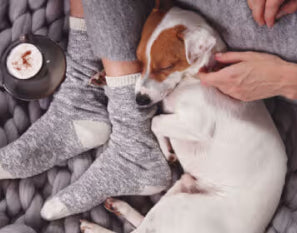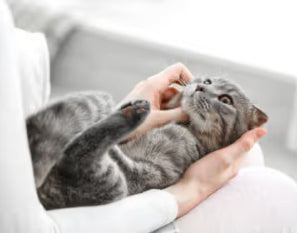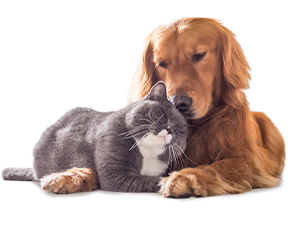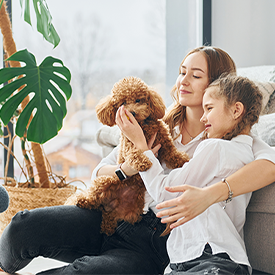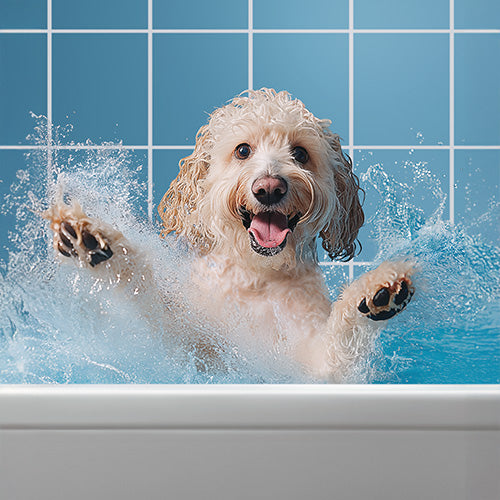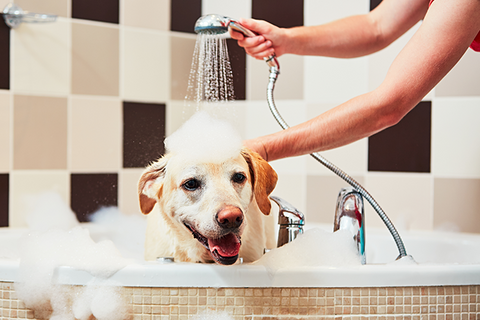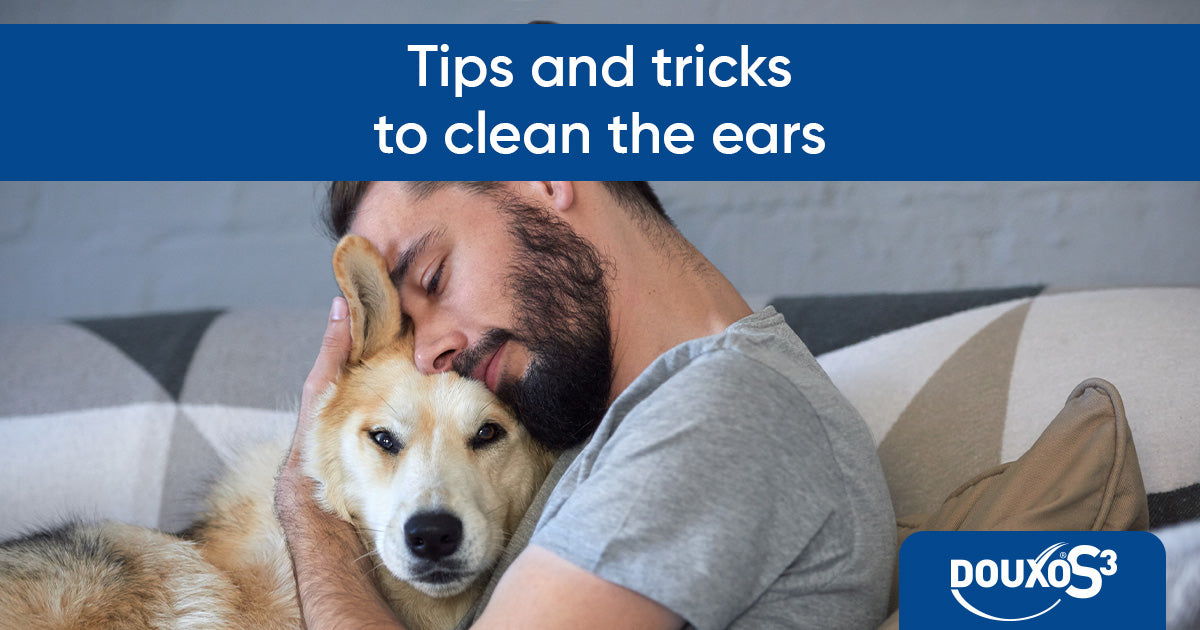
Tips and Tricks to Clean the Ears
Ear problems are common in dogs, and if left untreated they can be very painful and irritating for your pet. By regularly checking your dog’s ears for any signs of concern, you can detect any abnormalities early, so prompt veterinary treatment can be given. Unfortunately, ear infections frequently recur and can cause ongoing issues, so you will need to collaborate with your vet to find out what is the cause or causes that have lead to it.
Awareness and regular ear cleaning sessions will improve your pet’s ear health and help reduce the frequency of flare-ups.
Are my dog’s ears normal?
A dog’s ear shape and carriage can vary greatly between breeds, from pendulous, low-hanging ears to straight, upright ears. However, the signs of a healthy ear are the same for all dogs.
-
Ears should be alert
-
There should be no signs of pain or discomfort when you touch your dog’s ears
-
No excessive itching or scratching at the ears
-
Both ears should look symmetrical
-
No unpleasant odour
-
No wax build-up or discharge present
-
No red or inflamed skin inside the ear
-
No presence of crusts or damaged skin
To ensure that any ear problems are recognised early, all dogs should have their ears checked at least once a week, and if there are any changes to your pet’s ears or any signs of concern, you need to take your dog to see your vet. Cleaning, while important, is not a substitute for veterinary care if there is an ear infection!
Do ear problems vary between different breeds of dog?
Certain breeds of dogs are more likely to develop ear infections with the Basset Hound, Shar Pei, Labradoodle, Beagle, Golden Retriever and Cockerpoo being the most at-risk breeds. Generally, if your dog has a pendulous ear carriage or is a breed that commonly suffers from skin disease, they may be more vulnerable to developing ear problems and require closer monitoring.
How often should I clean my dog’s ears?
Dogs with healthy ears may not need their ears intensively cleaned, as the ear has its own cleansing mechanism and, as far as they work properly, it won’t be necessary. For those animals, getting used to the procedure as detailed below, and performing it once a month, may be enough. However, it is necessary to pay attention to some risk factors. For example, if your dog frequently swims, they may benefit from having their ears cleaned after each swimming session, as moisture inside the ear may increase risk of developing an ear infection.
As a general rule, any dogs who suffer from ear infections will benefit from having their ears cleaned regularly both during the maintenance period (common frequency once a week) and during the flare-ups (every other day) .The frequency will vary between individuals, so you should ask your vet for advice on the best ear cleaning routine for your particular dog.
How do I clean my dog’s ears?
Cleaning your dog’s ears should seem straight forward, but before your first attempt you may wish to be shown by your vet. It is also important that you never use a cotton bud down your dog’s ear canal, as this will risk perforating the ear drum and push debris further down the ear canal.
Easy steps to help you clean your dog’s ears
-
Wash your hands.
-
Lift the ear flap up to gently straighten the ear canal – This removes the 90° bend between the horizontal and vertical ear canal so the ear cleaner can reach deeper into the ear.
-
Apply a few drops at body temperature of ear cleaner to the ear canal.
-
Massage the base of the ear gently for 30 to 60 seconds – This contact time may vary, so check the instructions on the bottle.
-
Use a piece of cotton wool to gently clean the opening of the ear and the inside of the ear flap.
-
Repeat for the other ear.
What are the best products to use?
There are a wide range of ear cleaners available but they each have very different purposes, from soothing irritated ears to breaking down wax and preventing yeast infections. Before choosing an ear cleaner, you should ask your vet for advice on the best cleaner for your pet.
DOUXO® S3 CARE Ear Cleaner is an all-round ear cleaner, ideal for the majority of dogs. Its micellar technology makes it ideal for breaking down wax, while its soothing properties help settle itchy and irritated ears. Unlike many other ear cleaners, it does not leave any greasy residue due to its water-based formula and it is pleasant for owners to apply with its appealing coco-vanilla fragrance.
Another option is DOUXO® SPA Ear Cleaner, part of the DOUXO® SPA dermatological skincare range. It is formulated to gently cleanse and moisturize the ear canal while respecting the skin’s natural balance. Thanks to its non-irritating, fragrance-free formula enriched with soothing ingredients, it’s ideal for regular ear hygiene or for dogs with more sensitive ears.
Training your puppy for ear cleaning
It is important to get your puppy used to having their ears handled and cleaned from an early age to prevent issues with ear cleaning developing in later life. To be successful, make sure every training session is a positive experience with plenty of fuss and treats. Start with short, frequent sessions while slowly building up your puppy’s confidence.
Always build up the ear cleaning routine with small puppy steps,
-
Begin by getting your puppy used to having their ear handled. Make sure they are comfortable with having their ear flap lifted.
-
Then get your puppy used to having the inside of their ear cleaned. Use a damp piece of cotton wool to gently wipe the inside of the ear flap. Start with cleaning the ear tip and slowly build up to cleaning the whole ear flap over a series of training sessions.
If your puppy finds one step of the ear cleaning process difficult, go back a step to regain their confidence.
How to avoid an ear cleaning phobia
Ear cleaning can be a stressful experience for some dogs and their owners. These dogs may have suffered from painful ear conditions in the past so will no longer tolerate ear cleaning, while owners may not feel confident about cleaning their dog’s ear and avoid the task.
Fortunately, there are several steps owners can take to help avoid problems with ear cleaning developing in the first place:
-
Get your dog used to having their ears handled before any ear problems start – Keep sessions short but frequently repeat them.
-
Use treats to distract your dog while you handle or clean their ears.
-
Ask your vet to demonstrate the correct way to handle and clean your dog’s ears.
-
Get your dog checked by your vet as soon as you notice any signs of ear problems – ear conditions are painful, so do not try to clean sore or inflamed ears.
Ear problems are one of the most common conditions that vets treat, as dogs regularly suffer from ear issues, and can be very frustrating. You can help your dog by regularly checking their dog’s ears and seeking veterinary treatment at the first sign of any problems. For some dogs, ear cleaning can make up an important part of improving their ear health, so speak to your veterinary practice for advice on the best way to care for your dog’s ears.







